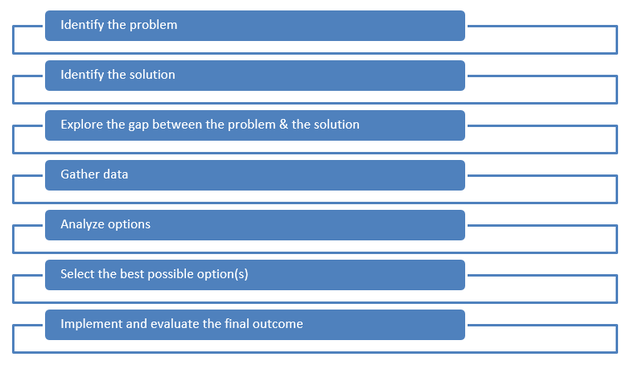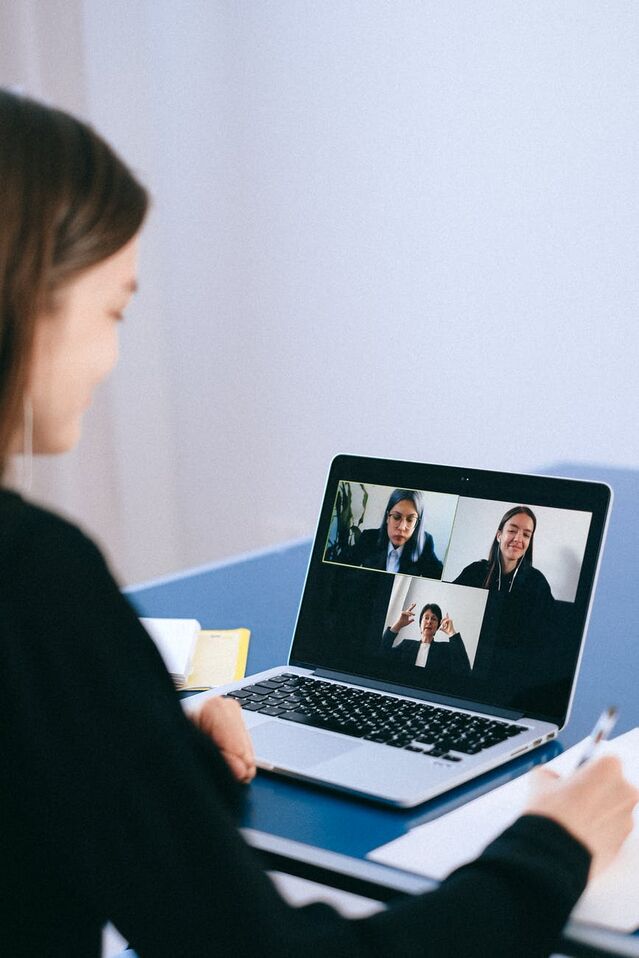Stress
Back to School in a Pandemic: Tips to Foster Mental Health
Part I: Strategies to help students, parents, and teachers.
Posted August 15, 2020 Reviewed by Matt Huston
Going back to school looks a bit different for us all this year. Just as COVID-19 rates and regulations have varied across the nation, plans and preferences pertaining to best practices for the upcoming school year have been wide-ranging as well. The diverse options and considerations, not to mention merely living in a historic pandemic, has caused an understandable surge of stress for students, parents, and teachers alike. One undeniable constant is that the need for mental wellness during this time is essential. Here are a few tips to foster mental well-being as you gear up for this academic year.

1. Be engaged in the decision-making process
Prepping for school often comes with a plethora of decision-making points, however, doing so in a pandemic has certainly amplified this process. There is a broad spectrum of perspectives on the best modality for launching this new year, ranging from full virtual learning to traditional in-person education.
Let’s face it, there are valid points on both sides—involving accessibility to resources, pre-existing health conditions and risk factors, local COVID-19 rates and hospitalizations, and diversity in learning abilities, socio-emotional wellness, and the quality of education.1,2
Families in the same district may find themselves making similar considerations, however, their unique realities may cause them to draw different conclusions. There is no easy decision to be made in this context, yet the right decision for you may be an acknowledgment of this reality in conjunction with the characteristics of your family. Consider using the Rational Model of Decision-Making3 to guide you in your process.

Understanding the issue can help you to problem solve and reduce your stress levels. When gathering data, you may benefit from exploring the stances of people who are guides in their respective fields. For example, you may choose to research medical experts and consult the individuals your family may utilize for care (e.g., primary care physician, pediatrician, mental health therapist). Refresh your knowledge of COVID-19 with the added lens of your district’s policy. For example, while six feet of distance is a well-known preventative measure, what will this look like in your local school? Knowing the methods suggested in your neighborhood may help you paint a more realistic picture of your options and find the right conclusion for your family.
2. Manage what you can; release what you cannot.
While COVID-19 data becomes available daily, there is still a lot of uncertainty surrounding the virus. We have become more informed throughout the pandemic, yet even among the most informed a gap exists regarding long-term consequences for our physical, mental, social, and educational wellness. For example, while there may be long-term educational and social effects of closed schools, there may also be short and long-term effects of exposure at schools, not to mention the new normal of in-person guidelines (e.g., lunch in classrooms, regulated distance between students).
It is important to manage what you can with the information you are provided and release the need to control what you cannot. A key difference between stress and anxiety is the false sense of control that may arise from overworrying and overcompensating. This is not a suggestion to abandon your methods of preparation, but to do so in an informed manner, as explored earlier, and then give yourself the grace to acknowledge that this decision-making process is not easy for anyone. You already have a lot on your plate. Beware becoming so wrapped up in what’s beyond your control that you lose sight of what is within your ability to manage.

3. Have open communication
In addition to researching helpful information, keep in mind that communication with your network can be a helpful part of this process. There may be key considerations that you may miss if it’s only your nose in the data. Brainstorming with others can help you to organize the thoughts buzzing through your mind, expand your perspective, and improve your support system.
Ann Shillingford-Butler, an associate professor at The University of Central Florida’s College of Community Innovation and Education, promotes open communication with children in the preparation process. While the content of the discussion may vary per developmental level, Dr. Shillingford-Butler encourages parents to broach topics such as wearing masks and maintaining a safe distance, even with the little ones. As a mother, Dr. Shillingford-Butler shared that she also used visual aids to help her young child better understand these concepts. If you have an older child or are teaching an older student, Dr. Shillingford-Butler suggests letting them share feedback, including their hopes, feelings, and ideas.
Teachers and staff are often overlooked in the back-to-school conversation. For example, while a common argument for going back to school in person is that current data shows that children are at less risk for severe symptoms1, children are not the only ones who will be entering the building. Many teachers feel optionless, as they need to work to support their livelihood. When districts are making considerations, it is essential to include the voices of the educators who will be putting themselves at risk for the sake of the learners. As the school year begins, open communication between parents, teachers, and students can allow for a strong foundation of support.

4. Establish a support system
A strong social support system helps to foster mental wellness. Concerns about connection in our modern world have been highlighted since well before COVID-19.4 The pandemic has further exacerbated this problem.5 However, regardless of what option you choose for returning to school, social connection can still be fostered. A helpful place to begin can be with those in your household. In addition to open communication about school, it can be helpful to check in on areas of wellness to highlight gaps and help one another. Even if you live independently, there are diverse ways to stay connected with others, such as text messages, emails, phone calls, digital gatherings, and video games. While these may not be your first choice for connection, having an option in a pandemic certainly beats none.
Pre-existing networks such as friends, neighbors, and colleagues are a great place to start. Melanie Tiwari, a middle school educator with 19 years of teaching experience, shares that a helpful part of her preparation process has been collaborating with her colleagues. Her support system has helped her to clarify expectations, understand key objectives, explore diverse tactics, and highlight key concerns with individuals who can relate to her current context. Tiwari also highlights that she finds it helpful when students and parents recognize the need to seek proactive support. If a parent reaches out with a question on behalf of their child, even if the answer is not readily available, the parent honestly seeking help allows them to create a collaborative approach in flagging an area of concern that needs to be addressed. In addition, if the educator has an established network of administrators and colleagues to assist, this can aid in the overall process of coming to a conclusion that will ultimately help all parties involved.
Beyond the school system, some individuals are refining their local networks to include small groups of individuals who concur on preventative guidelines and commit to spending time with one another to allow for in-person connection. Dr. Shillingford-Butler suggests that if choosing this option, be sure to reflect on your preferences and clarify your mutual agreement. For example, one family’s definition of safety may be wearing masks when going to the mall, while another’s may be avoiding the mall whenever possible.

5. Practice self-care
Self-care is an essential process that encompasses a variety of skills to protect you from stress. Knowing what wellness means to you can help you highlight key strategies you need to foster your well-being. Self-care can help throughout the lifespan regardless of whether you are a student, parent, teacher, or even all of the above. Especially as an adult, self-care allows you to better regulate yourself so you can be a better friend, partner, parent, teacher, etc. Self-care is always an important practice in maintaining balance—however, the COVID-19 pandemic has caused a surge in stress levels across the globe, which has emphasized the essentiality of self-care.
To begin, here are some helpful questions to ponder to help you develop your self-care:
1. What does wellness mean to you?
2. When you are well, how do you know (e.g., signs, feelings, behaviors)?
3. How do you know when you are stressed?
4. What are examples of things that increase your stress levels?
5. How have you coped with stress in the past?
6. What activities help you feel balanced?
7. How do individuals in your support system cope?
8. What are some things you have not tried for stress management, but would like to?
9. What is a skill you can use when short on time?
10. What is a skill that you can use that doesn’t require a new purchase?
When it comes to self-care, the more strategies you have in your toolkit, the better. The coping skills that work for you may vary per context, and having a plethora of options allows you to be better equipped to handle your stress. If your go-to coping skills are difficult to use in the context of COVID-19 precautions, be creative. Take the opportunity to explore related skills. Read this piece if you're interested in learning more about self-care strategies in the pandemic.
A key factor in practicing self-care is the ability to foster your self-awareness. You can have a variety of excellent skills in your toolkit; however, you will find yourself at a loss if you do not know how to recognize when you’re in need of them. In addition to the prompts above, it can be helpful to step back and consider your strengths, in order to utilize them in your process, as well as your areas for growth, in order to establish what resources you will need to help fill that gap.
Finally, keep in mind that self-care doesn’t have to happen in solitude. Self-care allows you to recognize your needs, and while everyone is unique, it’s quite possible that there may be others in your network who have similar needs as well. Open communication allows you to recognize this overlap, collaborate to meet these needs, and support one another in the process. To develop a helpful self-care kit with a variety of tools it may be beneficial to include strategies that you can do independently as well as skills that you can use with others.
To learn more helpful tips for returning to school in the time of COVID-19, see part 2 of this series.
References
Centers for Disease Control and Prevention. (2020). The Importance of Reopening America's Schools This Fall. U.S. Department of Health and Human Services. https://www.ahrq.gov/research/findings/nhqrdr/nhqdr17/index.html
Spiers, E. (2020). Schools can’t open safely. Pretending they can only helps Trump’s gaslighting. The Washington Post. https://www.washingtonpost.com/outlook/2020/07/22/schools-cant-open-saf…
Uzonwanne, F. (2016). Rational model of decision making. In A. Farazmand (Ed.), Global Encyclopedia of Public Administration, Public Policy, and Governance. Springer International Publishing. https://www.researchgate.net/publication/311761486_Rational_Model_of_De…
Ali, S. (2018, July 12). What you need to know about the loneliness epidemic. Psychology Today. https://www.psychologytoday.com/us/blog/modern-mentality/201807/what-yo…
Ducharme, K. (2020). COVID-19 is making America's loneliness epidemic even worse. Time. https://time.com/5833681/loneliness-covid-19/#:~:text=Even%20before%20t…




